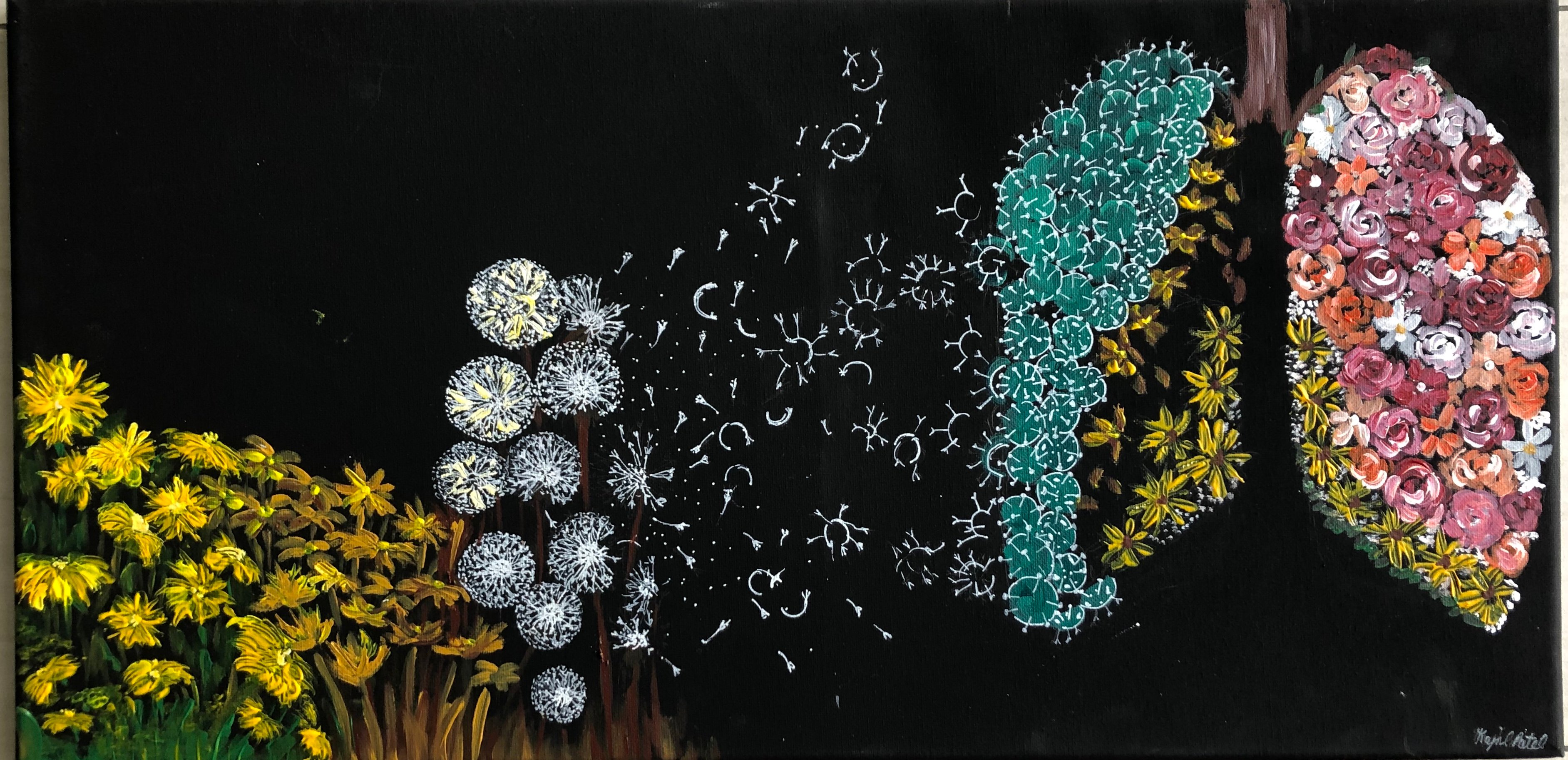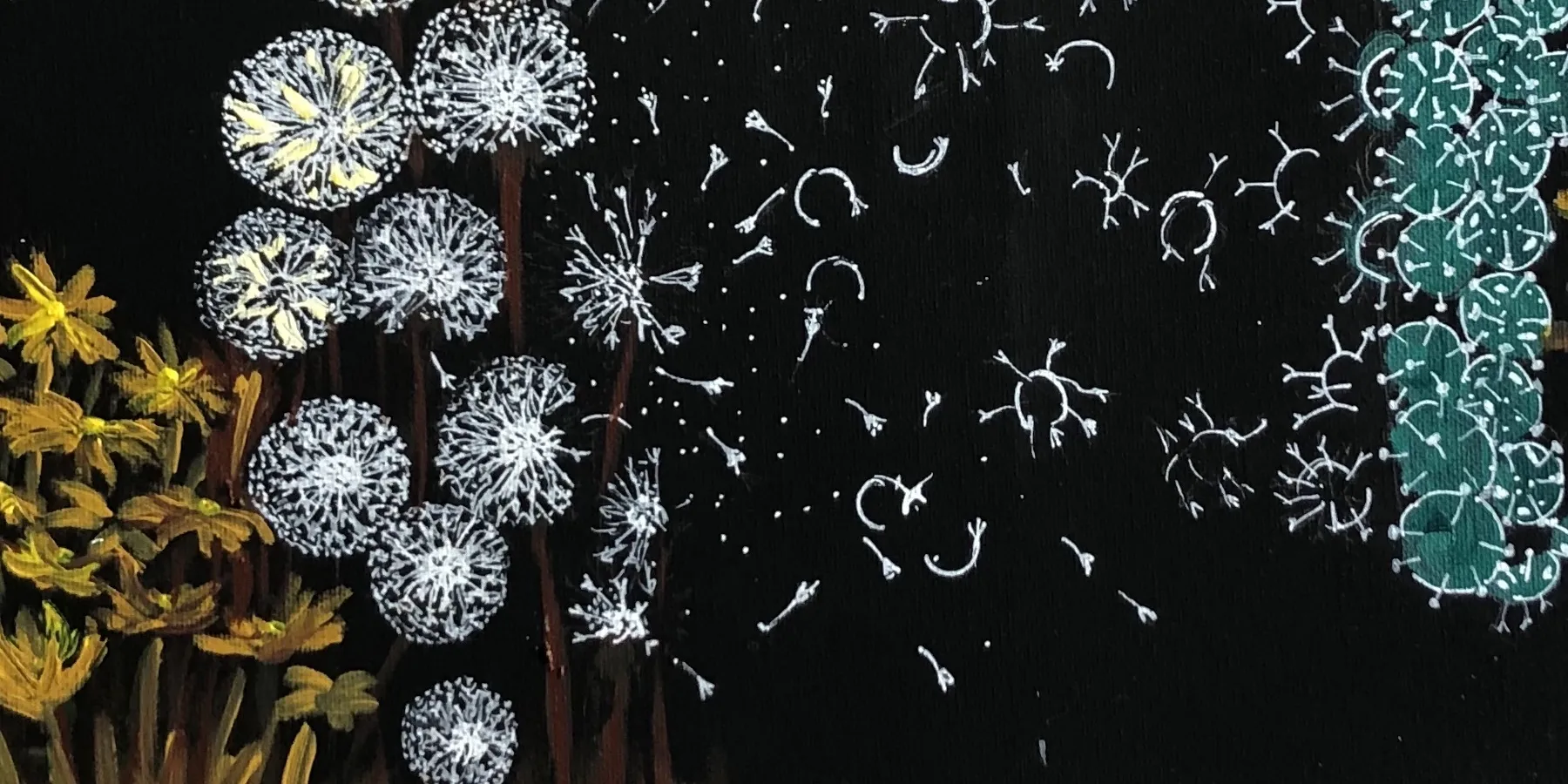Abstract
This painting memorializes the lives of people who died in the COVID-19 pandemic and people who have died from police brutality.
Figure. Power of Breath

Media
Acrylic on canvas.
As a child, I used to pick dandelions that had transitioned from flower to seed, close my eyes tight, and blow on them to disperse them and to make a wish. Little did I know then that one breath of dispersed dandelion seeds was toxic to plants in the rest of the garden. The novel coronavirus humbles us, taking our breath away in more ways than one; dandelions in this painting are represented as transforming into white seeds flowing through a space in which they transform into novel coronavirus, SARS-CoV-2, proteins settling in shades of teal.
In a pandemic year further toxified by the murder of George Floyd at the hands of Minneapolis police officers, we recall his last words: “I can’t breathe.”1 May his last breath, and the last breaths of all whose lives have been lost in the first half of 2020, be memorialized.
Words are made of breath. We can use our breath to spread weeds or flowers; we can choose to spread kindness, hope, and compassion.
References
-
Ehrenfeld JM, Harris PA. Police brutality must stop. American Medical Association. https://www.ama-assn.org/about/leadership/police-brutality-must-stop. Published May 29 2020. Accessed June 8, 2020.




